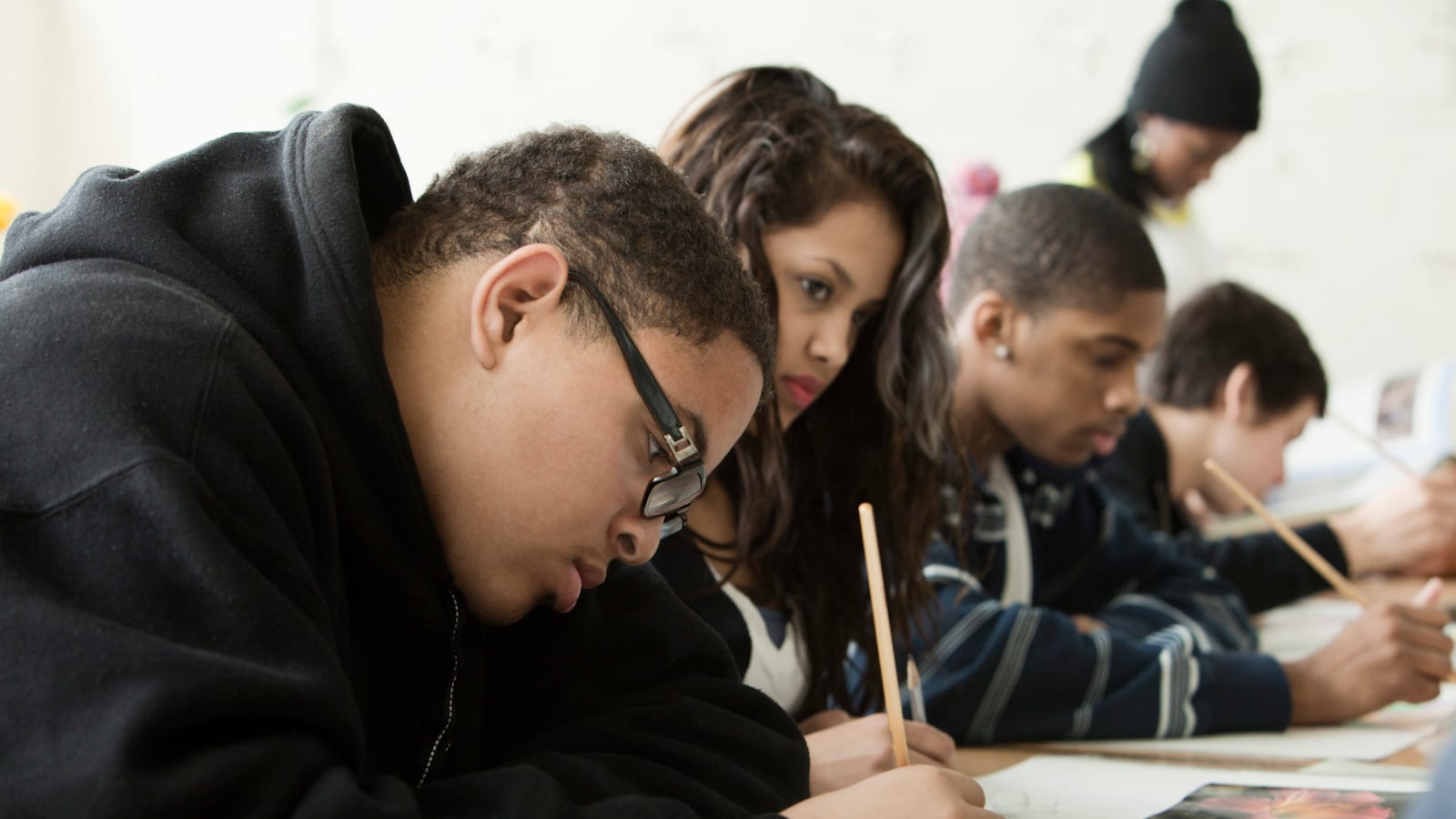When Mayor Michael Bloomberg launched the Expanded Success Initiative in 2012, he hoped to address a problem that had vexed policymakers: How can schools get more young black and Latino men not only to graduation — but also ready for college?
With just 10 percent of male students of color graduating “college ready” at the time, city officials hoped to boost that number by giving extra money and support to schools that already made strides getting those students to graduation. With extra resources, the theory went, those same schools might be able to nudge young men of color into college while the city studied and replicated their approaches.
But after four years and $24 million, the program has not lived up to its promise, according to a report released Wednesday by the Research Alliance for New York City Schools. Schools in the program turned out to be no better at preparing young men of color for college or helping them enroll than a group of similar schools that didn’t receive extra support.
“The aspirations were very high,” said Adriana Villavicencio, the lead author of the study, which, like the initiative itself, was funded by George Soros’ Open Society Foundations. “[The initiative] was not able to move the needle on a number of student outcomes — in particular college readiness and college enrollment, which were the primary goals stated at the outset.”
The Expanded Success Initiative, launched as part of a broader effort to aid black and Latino young men across the city, included 40 high schools that had strong graduation rates among young men of color, but still struggled to meet the city’s new college readiness metrics.
Those schools received $250,000 in one-time funding, ramped up academics, added college counseling and career preparation programs, and were asked to implement some combination of mentoring, tutoring, and leadership opportunities. Schools were also encouraged to promote culturally responsive education — such as studying texts featuring protagonists of color — and less strict approaches to student misbehavior.
Exactly how the program was implemented at each school varied considerably: Some schools created small advisory groups for students to talk about academic challenges or offered SAT prep sessions. Others focused on expanding AP classes or offering workshops for parents on college financial aid.
About 16 percent of black and Latino male students at the participating schools were found to be college ready, compared to 18.6 percent of the same group of students at comparison schools, the report found, though the difference was not statistically significant.
So why didn’t the program lead to better academic outcomes for young men of color?
One possible reason, the study notes, is that the program looked different at every school that participated, making it difficult to hold schools accountable for completely buying in or picking high-quality programs (a frustration some of the program’s managers expressed).
Second, the effort included a broad range of initiatives designed to make schools more welcoming for students of color, including different approaches to discipline, but did not always drill deep into college preparation. (The program did not improve student attendance or reduce suspensions.)
“Those of us who have seen a lot of educational evaluations show essentially no effect — I think we were anticipating this would be really hard,” Villavicencio said.
The third potential reason the program fell short, researchers found, was the $250,000 funding boost was designed to phase out just after the halfway point of the four-year program, which made schools less faithful to the initiative.
At Manhattan’s New Design High School, for instance, Principal Scott Conti used the program to take students on a trip to Washington, D.C. to visit colleges and museums, add a counselor who helped students with academic or life issues, and train staff members in culturally responsive education. But after the funding dried up, Conti lost the counselor he had hired.
“It’s a great initiative,” he said. But, he added, “They opened up and tried to get to 100 miles per hour then closed very quickly.”
Despite some lackluster results in boosting academic outcomes, the effort has produced other significant benefits. Students at Expanded Success Initiative schools were more likely to receive college advising, go on college trips, and participate in mentoring programs.
And based on hundreds of interviews and surveys, the researchers found that students were more likely to feel a sense of “fair treatment” and belonging at school and were also likelier to talk with adults about their plans after graduation (though they were no more likely than students at similar schools to apply to college).
“Students can feel so alienated when they come into school buildings,” said Villavicencio, who helped conduct interviews at schools in the program. “To hear them talk about their schools in such a positive way signaled a shift in the school environment for boys of color.”
But the researchers point out that the improvements in school culture were supposed to also improve college access. “These patterns suggest that we cannot assume, as [the program’s] theory of action does, that greater participation in these activities, more college-focused support, and a greater sense of belonging in high school will promote college access and success — at least not on their own.”
Josh Thomases, a top education department official during the Bloomberg administration and one of the program’s architects, also pointed to other less tangible ways the Expanded Success Initiative has made an impact. He said the effort helped make boosting college readiness for black and Latino young men a higher priority that was “less siloed” in the education department.
It also helped raise awareness around culturally relevant education “in a way that was entirely absent five years ago,” he said.
Still, Thomases acknowledges the program didn’t pan out as he hoped.
“We never thought 40 schools were going to break the ceiling and figure it all out,” he said. “I’d be lying to say I wasn’t hoping for more.”

